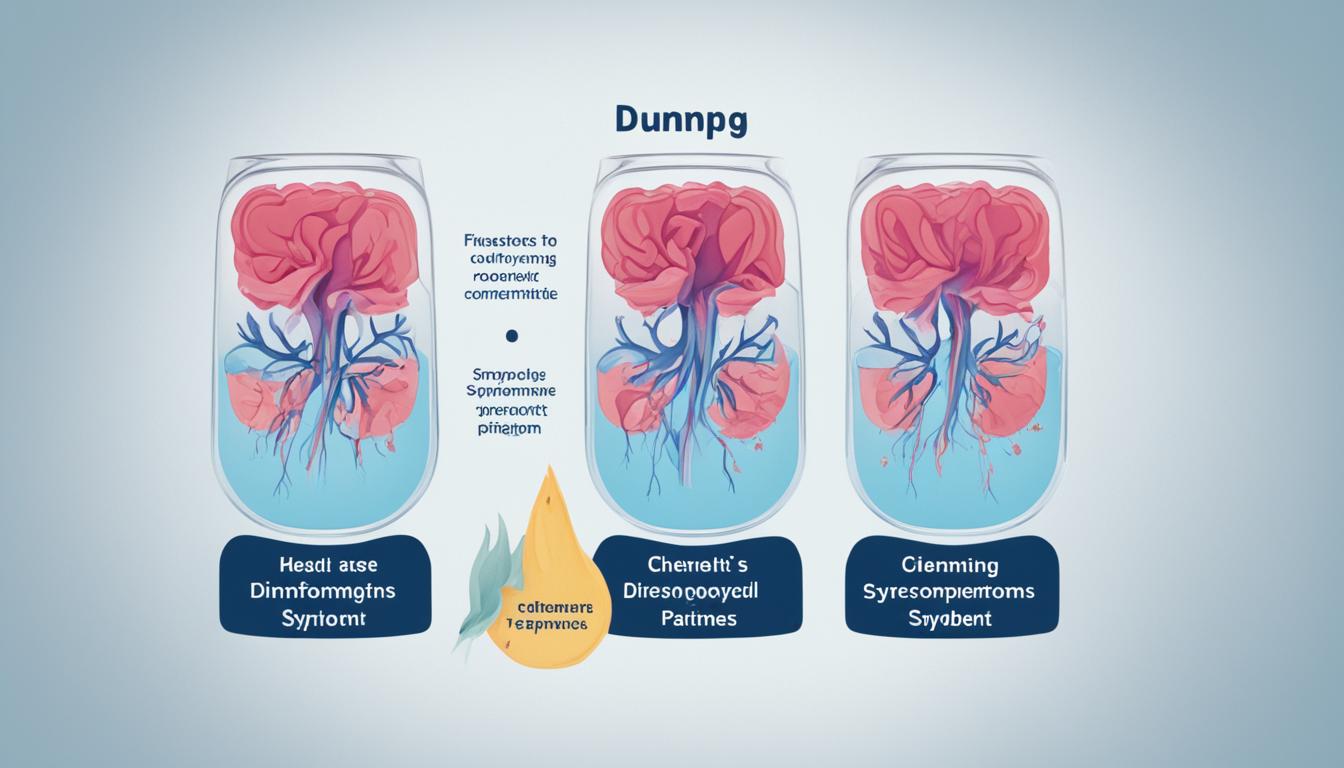Dumping syndrome happens after certain stomach surgeries. It shows up with nausea, vomiting, belly pain, and needing to run to the bathroom. Food moves too quickly from the stomach to the small intestine. These symptoms can strike within 30 minutes of eating or a few hours later. People who had their stomachs made smaller through surgery, like gastric bypass or gastrectomy, often face this condition.
To find out if someone has dumping syndrome, doctors look at their history, check their blood sugar, and may use a camera to see inside the stomach. They will ask the patient about their symptoms and look at their health story. Blood sugar tests show how the body handles food. A gastroscopy lets the doctor see if there’s a physical issue in the stomach and small intestine.
Diet and lifestyle changes are key in managing dumping syndrome. Eating small meals often can slow down the stomach emptying. It’s also best to stay away from sugary foods. In some hard cases, drugs or another surgery might be needed to help. Research is also looking at how stem cell therapy might one day offer a new way to treat this condition.
Key Takeaways:
- Dumping syndrome can come after certain stomach surgeries, causing issues like nausea, vomiting, stomach pain, and quick bathroom visits.
- It can hit within 30 minutes or a bit later after eating.
- Surgeries that make the stomach smaller are often to blame for dumping syndrome.
- Doctors diagnose dumping syndrome by asking the patient about their health, checking their blood sugar, and looking inside with a special camera.
- Managing dumping syndrome involves changing what you eat, how you eat, and sometimes taking medicine or having another surgery.
- There’s hope in using stem cell therapy in the future to treat dumping syndrome.
Symptoms and Diagnosis of Dumping Syndrome
Dumping syndrome has early and late symptoms. Early symptoms show up 10-30 minutes after eating. They include nausea, vomiting, stomach cramps, diarrhea, and feeling dizzy. These symptoms can make life hard. Late symptoms start 1-3 hours after a meal. They include being tired, dizzy, having a fast heart rate, sweating, and feeling weak. These problems can be tough to handle and might need a doctor’s help.
Doctors diagnose dumping syndrome by checking the patient’s history and doing a physical exam. They use blood sugar tests, looking inside the stomach (gastroscopy), and the oral glucose tolerance test to figure it out for sure. These tests show how fast the stomach empties and what blood sugar levels are like. A special test where the patient eats food with a little bit of a radioactive substance helps too. Doctors can see this ‘radioactive meal’ move through the body. This identifies any problems. After a clear diagnosis, doctors can start the right treatments.
Causes and Treatment of Dumping Syndrome
Dumping syndrome happens when food moves too quickly from your stomach to the small intestine. This issue is mostly seen in people who have had surgery on their stomach or took out part of their esophagus. After these operations, the stomach and small intestine might not work as they should. This leads to the food moving faster than normal.
There are other causes of dumping syndrome too. Things like diabetes and surgery that remove part of the esophagus can also play a part. These conditions can change how your body digests food, causing it to pass through too quickly.
Lifestyle and diet changes are key to managing dumping syndrome. Eating smaller meals more often can help. It’s also important to avoid foods and drinks high in sugar. And, try not to drink too much with your meals. This can make it easier for your body to digest food.
In some cases, your doctor might give you medicine to help with the symptoms. Octreotide is one type of medicine that can slow down food moving through your digestive system. But, if your condition is very serious, you might need more surgery to fix it.
By making changes in what you eat and sometimes taking medicine, dumping syndrome can become more bearable. These actions can really help improve your daily life if you have this condition.
Stem Cell Therapy for Dumping Syndrome and Conclusion
Stem cell therapy is showing hope in treating dumping syndrome, often seen after gastric surgeries. Stem cells can repair tissues and help the stomach and small intestine work better. There is ongoing research to check if this method is both safe and successful.
Using stem cells might make treating dumping syndrome easier and better. But, more studies are needed to know for sure. Experts are trying to find out all the good and bad of using this new therapy. They hope to find new ways to help those with dumping syndrome.
Lifestyle changes and diet can help with dumping syndrome, but some severe cases need more. The progress in stem cell therapy is exciting for the future. Doctors and scientists believe it could lead to better care and life for patients with this condition.

